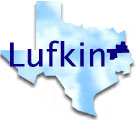

|

|

|

|

|

|

|

|

|

|
TranStar and Other Texas Region TMCs Equipment Packages |
 |
The following equipment packages are associated with the "TranStar and Other Texas Region TMCs" element. Select the "Details" icon to see the detailed requirements associated with each equipment package, or consult the National ITS Architecture web site for more information.
Provides interface to the emergency call-taking systems such as the Emergency Telecommunications System (e.g., 911) that correlate call information with emergencies reported by transit agencies, commercial vehicle operators, or other public safety agencies. Allows the operator to verify the incident and forward the information to the responding agencies.
Dispatch emergency vehicles to incidents, tracking their location and status. Pertinent incident information is gathered and relayed to the responding units; includes requests for signal preemption.
Evacuation planning and coordination to manage evacuation and reentry of a population in the vicinity of a disaster or other emergency that poses a risk to public safety.
Strategic emergency planning and response capabilities and broad inter-agency interfaces to support large-scale incidents and disasters, commonly associated with Emergency Operations Centers.
Tactical decision support, resource coordination, and communications integration among emergency management agencies for Incident Commands that are established by first responders to support local management of an incident.
Development, coordination, and execution of special traffic management strategies during evacuation and subsequent reentry of a population in the vicinity of a disaster or major emergency. Interfaces with emergency management and other traffic management centers.
Remotely controls ramp meters, mainline metering, and lane controls on freeways based on upstream and downstream traffic flow and ramp queue length algorithms.
Remotely controls traffic and video sensors to support incident detection and verification; exchange information with other agencies including emergency management, maintenance and construction, alerting and advisory systems, event promoters, intermodal freight depots, and traveler information systems.
TMC Incident Dispatch Coordination/Communication
![]()
Center-based capability to formulate an incident response that takes into account the incident potential, incident impacts, and/or resources required for incident management including proposing and facilitating the dispatch of emergency response and service vehicles as well as coordinating response with all appropriate cooperating agencies.
Coordination between traffic management centers in order to share traffic information between centers as well as control of traffic management field equipment. This may be used during incidents and special events and during day-to-day operations.
Remotely controls traffic signal controllers to implement traffic management strategies at major intersections and on main highways for urban areas, based on traffic conditions, incidents, emergency vehicle preemptions, pedestrian crossings, etc.
 Web Spinner Technology.
Web Spinner Technology.